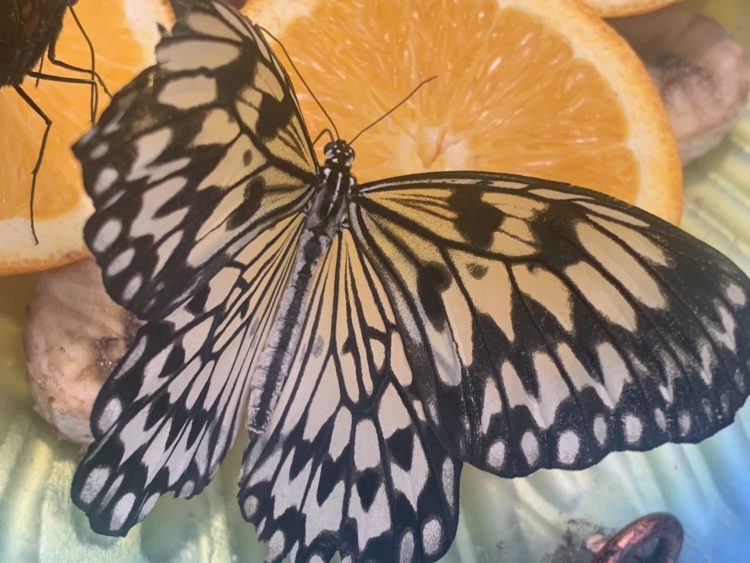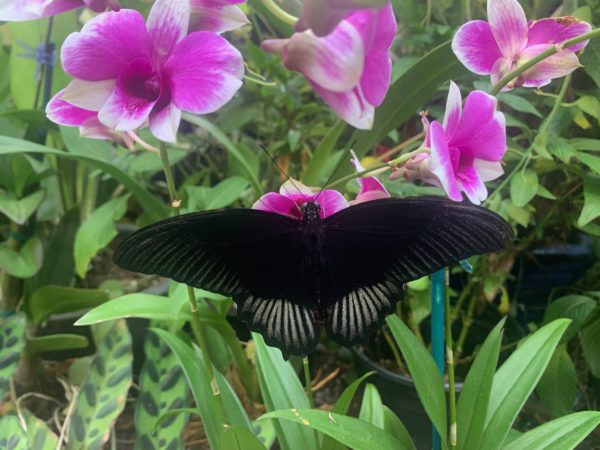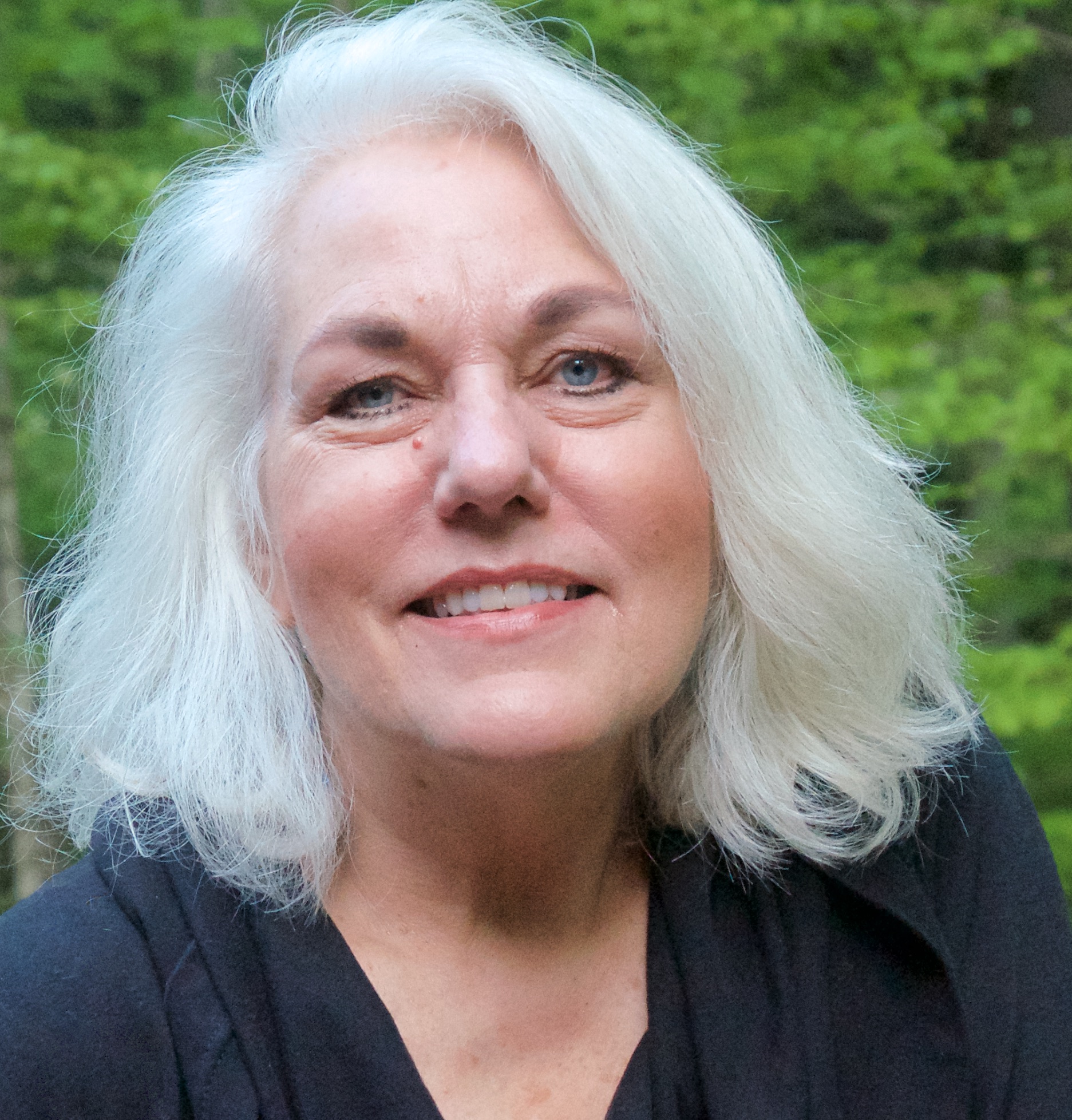
A resident of the Butterfly House at the Tucson Botanical Gardens in Arizona.
By Jacqui Banaszynski
It’s a common theme when a Storyboard contributor interviews a journalist about a descriptive analogy or metaphor in a written piece: How did you come up with that analogy? The same question comes up again and again when we analyze stories in writing workshops or brainstorm the bigger archetype of a story in a coaching session: How did you think of that?It’s a hard question to answer. There’s no guidebook I know that points in the direction of a fresh description, no thesaurus I know of for analogies or metaphors. Even if such references exist, lists of descriptive phrases would be limited by space, convention and the editors’ approval. They wouldn’t be yours. Then, the more they were turned to and used, the more they would risk becoming that scourge of written work: clichés.
(I may take on the issue of clichés in a future post. There’s more to consider than just don’t use them. A student of mine once made a passionate argument in their defense; she said they were shortcuts to clarity. In a writing workshop just last week, a young journalist was puzzled over the clichés I noted in her drafts; those phrases were new to her. Casual chat among contemporaries is riddled with them, as are my quick letters to friends. Live spoken journalism, like broadcast and audio, can tap them in a conversational tone and breeze on; they don’t stick like they do in written work. As for clarity — shared understanding? Only if the people you’re writing for do, indeed, share those cultural, political and literary allusions.)
Back to fresh descriptions. When people ask how to conjure them, I offer three considerations:
- Think of the audience. Will the bulk of them understand your shorthand references?
- Educate yourself. Google the derivation of a phrase or term. You might misunderstand it yourself.
- Pay attention to other writers and let their language inspire yours.
Then I suggest a fourth, which I consider the most important:
- Play with words. Anytime, anywhere and without limits.
Exercising your descriptive muscles
Some people seem hardwired to see the world in literal terms; a pen is never anything but a pen, a writing instrument, varying only by specifics: ballpoint, felt-tipped, fountain, nib width, ink color. Others understand the world through analogy, metaphor, even allegory. That pen? A channeler of dreams. A wand that holds memories. The tether to a paycheck.
The best writers stretch to both ends of that spectrum. And like any stretch, it requires exercise. That’s where word play comes in. The playground is all around you, everywhere, all the time. Pay attention to it. Think about how you would describe it literally so someone else, not able to see it for themselves, would have little doubt about its shape, color, weight, texture, utility, even smell.
Then make the stretch fun: Imagine what you are looking at in entirely different terms. What color is the sky of winter? In Seattle, when the cloud cover is low, I imagine “low” as a basement ceiling and the color as the bluish-white of skim milk. When I’m in the mountains, I try to find words to describe the variations of blue: Faded denim, bruised, brittle, Delft pottery.
Would I use any of those descriptions in a piece of writing? Who knows — although I just did. It depends on the tone of what I’m writing, and whom I’m writing for. But I play that way it all the time, several times a day. I’m not a natural or comfortable writer, so I need to work my linguistic stretch with as much purpose as I stretch my back. Word play is my literary yoga. I try to stretch to metaphors drawn from sports, fairytales, parables, nature, music, historical figures, Hollywood stars. My range is as limited as my experiences in life, but I keep reaching.
A butterfly word-gym
The latest place I super-stretched was at Tucson Botanical Gardens. The Butterfly House sits in the middle of the gardens. From the outside, it looks like little more than an expanded garden shed. On the inside — magic, held breath, laughter that is too rare after childhood. I’m still trying to find the right words to describe the place, and still failing. On the literal level, I could log the hanging orchids, the humidity, the pottery dishes filled with sliced oranges and grapes, the airlock of plastic strips at the entry and exit that keep the butterflies in and safe. I could draw on a bit of dialog from the gardener who let us in: “If a butterfly lands on you, don’t brush it off. Just be still and hang out until it leaves.” I’ve been doing some online research into the correct names of the butterflies I saw. Mostly failing so far.
I am struggling, too, on a metaphorical level. The words I used above — magic, held breath, laughter — start to express a feeling. They might be effective for some readers, but elusive for others. My brain clicks through adjectives — diaphanous, gossamer, shimmery, mottled — to describe the wings of that black-and-white beauty in the top photo. I reject them as vague and, yes, a bit clichéd,
So as I muddle through my day — laundry, email, cleaning the mud of recent rains off the flagstones along the house, gathering tax documents — I listen to the radio and note the tributes to folk-rock legend David Crosby, who died last week. The accolades and adjectives are endless, but I’ve yet to hear or read a metaphor for his music that makes me think, Yes! That’s exactly what it feels like to listen to him.
Then I let myself drift back to images of those butterflies and indulge in a bit of word play. I haven’t yet found the language that describes the experience. I might never. I don’t have to because I’m not on formal assignment to write about the Butterfly House — so it’s the stretch that’s fun. My quick Google research tells me the black beauty below is probably some type of swallowtail, though to write about her (it?) with literal specificity, I would engage an expert. Meanwhile, perhaps inspired by David Crosby, I think of her (him?) as the Stevie Nicks of butterflies.

Black-winged butterfly at the Tucson Botanical Gardens in Arizona.


